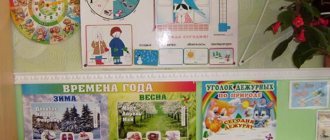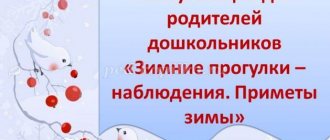Scheme of interaction between the teacher and preschool employees
Yana Bochkova
Scheme of interaction between the teacher and preschool employees
Scheme of interaction between a teacher and a preschool employee
Interaction between the teacher and the head of the educational institution.
The interaction of the teacher with the administration of the educational institution is aimed at creating optimal conditions for the full comprehensive development and training of students , protecting and strengthening their health in accordance with the state educational standard and programs implemented in the institution. Also for organizing work among parents (persons replacing them)
on issues
of raising and educating children in the family, promote the promotion of pedagogical and hygienic knowledge, attract parents (persons replacing them)
to participate in the activities of the institution, determined by the charter and parental agreement.
Comply with labor protection and fire safety regulations.
Interaction between a teacher and a senior teacher at an educational institution.
The senior teacher organizes current and long-term planning of the activities of the teaching staff of the preschool educational institution. Analyzes the implementation of educational, methodological and educational work in preschool educational institutions and develops proposals to improve its effectiveness. The interaction between a teacher and a senior teacher at an educational institution is continuous throughout the entire educational process. The senior educator assists teaching staff in mastering and developing innovative programs and technologies, and helps prepare for certification. Measures are being taken jointly to equip groups with modern equipment, visual aids and technical teaching aids, and to replenish them with educational, methodological, fiction and periodical literature.
Work is being carried out to comply with the rules and regulations of fire safety, traffic safety, and behavior on the street in the educational process.
Interaction between a teacher and the music director of an educational institution.
The general and musical-aesthetic development of preschoolers in kindergarten is carried out by a music director who has a good command of the theory and methodology of the pedagogical process, and a teacher who has general musical training.
The work of teachers is complex, varied, and must be carried out in close, mutual understanding and contact.
Music classes in kindergarten are the main form of organizing children's musical activities. the teacher participate in the preparation of music lessons . These activities often start in a group setting where there is something interesting going on for the children. For example, children discovered that some toys were missing and went to look for them. They come to the hall... and the playful music lesson begins. This creates motivation and interest in musical activities in children. Teachers think through all this and carry it out together.
The activities of the music director and teacher also include conducting music and speech classes. These classes are the connecting link in the activities of teachers. The classes are aimed at developing speech through expressive singing and are additional. The teacher actively helps the music director in carrying it out. The content of the lesson includes literary and musical material.
In music classes, children's singing skills are developed, improved and consolidated, and a stereotype of correct pronunciation of words is formed. The emotional basis of musical lessons contributes to better learning of various skills. The teacher , being present at such classes, enriches the methodology of his work on the development of children’s speech and brings it closer to the methodology of the music director.
The teacher and music director create a subject-development environment, which is carefully thought out by them. The subject-development environment is given fundamental importance in the pedagogical process of a children's educational institution.
The essence of the tasks of joint interaction between the music director and the teacher is to awaken the creative activity of children, develop their musical imagination and thinking, and stimulate the desire to independently engage in musical and creative activities.
Together, teachers must develop children’s musicality, educate their moral sphere, mental processes and personal developments. Thus, the music director and educator must provide for the integrity of music education: training, education , development. All these tasks can be implemented only if the following conditions are met:
— involvement in musical activities brings children only positive emotions;
— a humane and personal approach has been thought out, ensuring the emotional comfort of children;
— a comfortable musical and educational environment has been created in all forms of organization.
The music director and educator must keep the development of the entire holistic set of personality qualities at the center of the music education system, and this is the main result. The goal of the humane-personal approach, proclaimed by the pedagogy of cooperation , is an approach to the child’s personality, his inner world, where undeveloped abilities, strengths and possibilities lurk. The task of teachers is to awaken these forces and use them for more complete development.
Close interaction between the teacher and the music director ensures the effectiveness of the tasks of music education and an individually differentiated approach to children.
interact with children subjectively . This style of interaction between the teacher and the child gives the child the right to choose (songs, games)
for learning.
Game motivation, the presence of dialogue and polylogue (i.e., the interaction of the music director with the teacher , game character and children) makes the lesson very dynamic. During the lesson, when asking a question to a child, the music director (
teacher ) forms the question in such a way that it contains two possible answers. For example:
“What mood did the music evoke in you, happy or sad?”
,
“Do chicks sing in a high or low voice?”
. Children usually always answer correctly.
In the process of subjective interaction, teachers constantly put children in the position of an experimenter, ask them a lot of questions, encourage them to constantly think and look for an answer to the question posed. It is this interaction that has a great effect on the development of intellectual abilities.
The process of music education is long, you should not expect quick results. Only the joint activity of the music director and the teacher leads to the desired results in solving the problems of the general and musical-aesthetic development of preschool children.
Interaction between a teacher and the head of physical education at an educational institution.
Currently, one of the most important problems is the state of population health. Children's health is the wealth of the nation. The most accessible means of increasing health potential is physical education and physical activity.
In a preschool institution, physical education and health activities are organized by the teacher and the head of physical education . The effectiveness of physical culture and educational work in a preschool institution is largely determined by their interaction . Each of them performs work in accordance with their job responsibilities. The requirements for the activities of these specialists differ depending on the tasks being solved: general physical training of children, motor rehabilitation. Pedagogical activities are aimed at the child, therefore their actions must be coordinated with each other. Planning of their joint activities is carried out on the basis of the annual plan of the preschool institution and is formalized in the form of plans: consultations for educators , speeches at pedagogical councils and medical-pedagogical meetings
They are equally:
- know the program according to which the physical improvement of children is put into practice (goals, objectives, predicted results)
;
— carry out diagnostics of the physical condition of children according to the program implemented by the preschool institution;
- know the characteristics of the pupils’ and plan physical exercises in accordance with these characteristics;
— form children’s ideas about the hygiene and aesthetics of physical exercise (posture, exemplary display of physical exercises, conducting classes in sportswear and shoes, etc.);
- use the means of physical education to educate moral
(morally - strong-willed)
qualities in
pupils ;
- control physical activity based on external signs of fatigue;
- use physical education means to develop normal gender-role behavior in children;
- carry out hardening during physical exercises;
— ensure the safety of children during physical exercises;
— provide children with first aid in case of accidents;
- plan, conduct and analyze physical education and health activities during the day (morning exercises, physical education, outdoor games between classes and on the street, invigorating gymnastics);
— inform parents about the level of physical condition of their children and success in physical activity.
The life of every child in a preschool educational institution is built on the basis of a thoughtful alternation of physical activity, different types and forms of activity.
Interaction between a teacher and a medical worker at an educational institution.
The interaction between the teacher and the medical worker is aimed at:
• control of the sanitary condition of the premises and area of the kindergarten;
• compliance with the sanitary regime as prescribed by the doctor, organizing activities to harden children;
• ensuring the organization of recreational activities, adherence to the daily routine, proper conduct of morning exercises, physical education classes and walks for children;
• accounting for sickness absence, isolation of sick children;
• there is a joint daily morning reception of children;
• participation in pedagogical councils devoted to the problem of physical development and health of children;
• health education work of parents;
• compliance with the group's food schedule;
• maintaining food sheets for children in the group;
• organizing meals in a group.
Interaction between a teacher and a junior teacher at an educational institution.
The interaction between the teacher and the junior teacher occurs daily, throughout the entire day of the children’s stay in kindergarten, and includes:
• participation in planning and organizing the life activities of pupils , in conducting classes organized by the teacher ;
• creation of conditions for socio-psychological rehabilitation, social and labor adaptation of pupils ;
• together with medical workers and under the guidance of a teacher , ensuring the preservation and strengthening of the health of pupils , carrying out activities that contribute to their psychophysical development, their adherence to the daily routine;
• organization, taking into account the age of pupils , their work on self-care, compliance with labor protection requirements, providing them with the necessary assistance;
• participation in work to prevent deviant behavior and bad habits among students ;
• bearing responsibility for their lives and the health of children;
• dressing and undressing children, carrying out hardening activities;
• ensuring the protection of life and health of students during the educational process;
• compliance with labor protection and fire safety rules;
• ensuring the protection of children's lives, maintaining and strengthening their health;
• working together with children;
• interaction in work to improve the efficiency of the educational process and to create a favorable emotional climate for students in the group during their stay in a preschool institution.
Interaction between a teacher and a psychologist
1. Providing assistance in the formation of a bank of educational games, taking into account the psychological characteristics of preschoolers.
2. Participation together with the teacher in the organization and conduct of various festive events.
3. Participation and monitoring to identify the level of school maturity in children of senior preschool age.
4. Providing advisory and practical assistance to educators in relevant areas of their professional activities.
5. Organizing and conducting consultations on the development of children, as well as the practical application of psychology to solve pedagogical problems, thereby increasing their socio-psychological competence.
Interaction between the teacher and the speech therapist
The teacher diagnoses general development. Reports to the speech therapist the results of his observations of the child in various activities.
The speech therapist conducts a daily speech therapy examination of all preschool children, the results of which are reflected for each group of children.
Based on the diagnostic data of the speech therapist, the teacher plans classes with children based on the main correctional tasks.
1. Individual work for one month on sections and lexical topics.
2. Observation of the dynamics of sound production in children.
3. Joint recommendations of a speech therapist and a psychologist for children included in the “risk group”
.
4. Speech therapy leaflets and booklets issued once every two months.
5. Selection of speech material: pure sayings, rhymes, poems, tasks and exercises for correcting various components of speech activity.
Interaction between the teacher and the defectologist
The teacher-defectologist is the organizer and coordinator of correctional and developmental work. He conducts classes on familiarization with the environment, sensory skills, the formation of elementary mathematical concepts, the development of grapho-motor skills and spatial orientation, and subject-related practical activities.
Educators consolidate the knowledge acquired by children, practice skills until the skills are automated, integrating correctional goals and the content of children’s daily life, the content of other activities, as well as in routine moments.
To ensure unity in the work of defectologists and educators , it is necessary to develop a certain system of activities.




